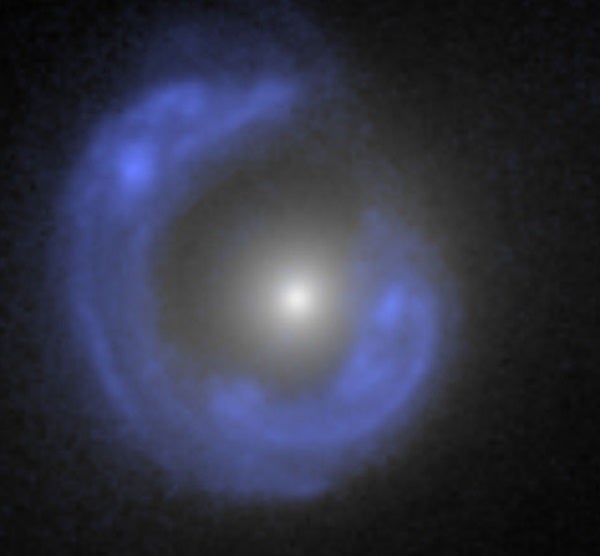An international team of astronomers, including Adam S. Bolton of the University of Hawaii’s Institute for Astronomy, has recently announced a finding that helps to settle a long-standing debate over the relationship between mass (the amount of matter) and luminosity (brightness) in galaxies.
The team achieved this result by compiling the largest-ever single collection of gravitational lens galaxies (70 in all). A gravitational lens is a phenomenon similar to a terrestrial mirage, but it occurs on a scale of many thousands of light-years. When two galaxies happen to be precisely aligned with one another in the sky, the gravitational field of the nearer galaxy distorts the image of the more distant galaxy into multiple arc-shaped images or even into a complete ring, known as an Einstein ring. These Einstein ring images can be up to 30 times brighter than the image of the distant galaxy would be in the absence of the lensing effect.
The discovery represents the culmination of the Sloan Lens ACS (or SLACS) Survey. The gravitational lenses were originally identified using data from the Sloan Digital Sky Survey, a major project that has used a dedicated 2.5-meter telescope in New Mexico to measure precise distances to nearly one million distant galaxies and quasars throughout one quarter of the sky. To observe and measure the details of the Einstein ring images, the SLACS astronomers then took advantage of the Advanced Camera for Surveys (ACS) aboard the Hubble Space Telescope, which delivers pictures of unparalleled sharpness.
“The SLACS collection of lenses is especially powerful for science,” says Bolton, lead author of two papers describing these latest results, which will be published in the Astrophysical Journal in August and September. “For each lens, we measured the apparent sizes of the Einstein rings on the sky using the Hubble images, and we measured the distances to the two galaxies of the aligned pair using Sloan data. By combining these measurements, we were able to deduce the mass of the nearer galaxy.”
In other lens surveys of this scale, distances to the lens and background galaxies—and hence the lens galaxy masses—have not been measured precisely.
By considering these galaxy masses along with measurements of their sizes, brightness, and stellar velocities, the SLACS astronomers were able to infer the presence of dark matter in addition to the visible stars within the galaxies. Dark matter is the mysterious, invisible material that is the majority of matter in the universe. And with such a large number of lens galaxies across a range of masses, they found that the fraction of dark matter relative to stars increases systematically when going from galaxies of average mass to galaxies of high mass.
The existence of gravitational lenses was first predicted by Albert Einstein in the 1930s, but the first example was not discovered until the late 1970s. In the 30 years since then, many more lenses have been discovered, but their scientific potential has been limited by the disparate assortment of known examples. The SLACS Survey has significantly changed this situation by discovering a single large and uniformly selected sample of strong lens galaxies. The SLACS collection promises to form the basis of many further scientific studies.










